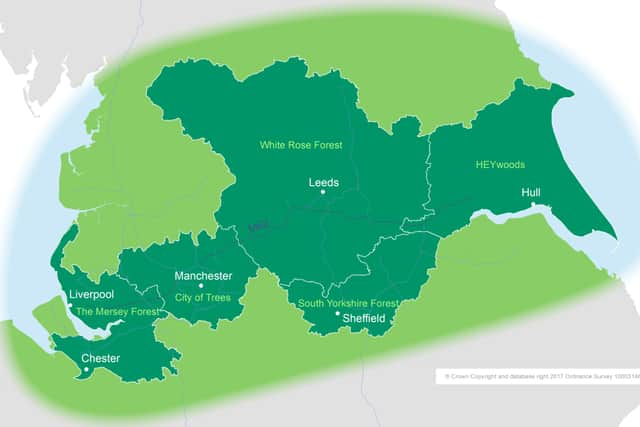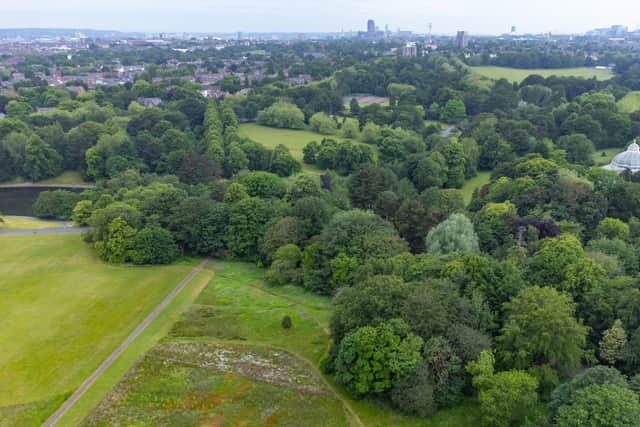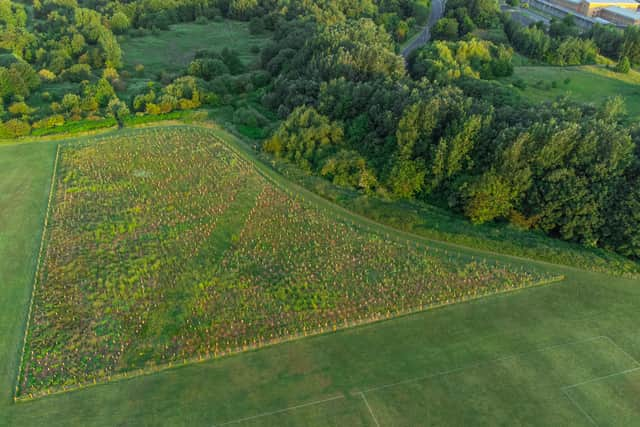Mersey Forest to plant 200,000 more trees from November as part of Northern Forest 50 million tree project
and live on Freeview channel 276
More than 200,000 trees are due to be planted across Merseyside and North Cheshire from next month as part of ongoing plans to transform communities and landscapes in the North West.
The government announced in September that it was putting £15 million towards the creation of woodland called the Northern Forest around the cities of Liverpool, Manchester, Leeds, Sheffield and Hull.
Advertisement
Hide AdAdvertisement
Hide AdThe Northern Forest scheme, launched three years ago, will comprise of over 50 million trees planted over 25 years and boost an area with only 7.6% woodland cover, which is lower than the England average.


What are the benefits?
The Woodland Trust said that among the benefits of the forest are a reduced risk of flooding and storage of thousands of tonnes of carbon.
The project will also create thousands of new jobs and help make people across the North happier and healthier.
Funding and partnership
The scheme involves a partnership of community forests in the north – The Mersey Forest, City of Trees, White Rose Forest, and HEYwoods – which are working with the Woodland Trust to turn the Northern Forest into a reality.
Advertisement
Hide AdAdvertisement
Hide AdThe latest funding is from the Government’s £640 million Nature for Climate fund.
Six million pounds will go directly to the Northern Forest to support the Woodland Trust’s Grow Back Greener programme, while £8.8 million will go to community forests within the Northern Forest area through the Trees for Climate programme.
What is the Mersey Forest?
The Mersey Forest is a growing network of woodlands and green spaces across Cheshire and Merseyside.
The woodlands are created through a partnership of local communities and businesses, seven local authorities, landowners, the Forestry Commission, Natural England and the Environment Agency.
Advertisement
Hide AdAdvertisement
Hide AdThe partnership has planted more than nine million trees to date, since the early 1990s.
What is happening across Merseyside?
Mersey Forest director Paul Nolan said trees such as oak, cherry, holly, willow, birch and lime will be planted across city parks and the Wavertree area of Liverpool in November.
He told LiverpoolWorld: “Although the Mersey Forest has been going for around 30 years, there is increasing urgency around the climate emergency which means trees are so important to help cities cope.
“The trees will also help preserve the biodiversity for animals we share the planet with.


Advertisement
Hide AdAdvertisement
Hide Ad“November is National Tree Week and it gives us the official green light to start planting until March.”
He said the planting will be done either by contractors or with local volunteers and encouraged the public to check what the Mersey Forest is doing via social media and Eventbrite.
National Tree Week
Billed as the UK’s largest annual tree celebration, National Tree Week runs from 27 November to 5 December and marks the start of the winter tree planting season.
The Tree Council charity says the public will be able to take part through a variety of events from webinars to tree planting and competitions.
Reaction to the Northern Forest initiative
Advertisement
Hide AdAdvertisement
Hide AdForestry Minister Lord Goldsmith said: “The Northern Forest is an outstanding example of how trees can benefit nature, climate and people.
“By creating woodlands close to urban and rural communities, we can provide greater links to nature in areas that need it most.”
TV presenter and northerner George Clarke has given his backing to the Northern Forest initiative.
He said: “The Northern Forest is a tremendous project. Being a northerner myself we are proud of some of the glorious countryside we have up here but it’s always surprising to me how low tree cover is in the region.
Advertisement
Hide AdAdvertisement
Hide Ad“We desperately need more trees up here for both people and wildlife. It’s great to see investment going into supporting something so positive and it’s inspiring that from Liverpool to Hull there will be places for people to go and enjoy a bit of green space.”


Simon Mageean, the Woodland Trust’s Programme Director for the Northern Forest, said: “This new funding is massively significant for this project and enables us to push on with this new phase. It will allow us to establish over one million new trees this winter and connect them better to the wider landscape, together with new woodlands in urban areas and rural areas across the Northern Forest.
“Not only do these new trees have the power to transform people’s lives through all the green space they bring in areas of traditionally low tree cover, they are also set to bring a big boost to our fight against climate change and encourage nature recovery.”
How can I get involved?
The Mersey Forest’s website offers a list of community groups the public can join to care for local woodlands and list games and craft ideas for children to get involved with.
Advertisement
Hide AdAdvertisement
Hide AdIt also has a series of downloadable ‘green skills’ guides including how to plant a tree and create a wildlife pond.
The site also promotes mindfulness and forest bathing, or shinrin-yoku, which was developed in Japan in the 1980s. The Mersey Forest offers tips and says it’s about immersing yourself in a natural environment and focusing on the sensory experience.
There’s an interactive map which shows woodland targets for local areas and showcases ideas from local people about improving the areas which can be voted for.